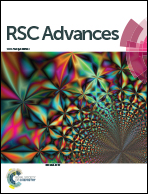Improving the toughness of thermosetting epoxy resins via blending triblock copolymers
Abstract
In this study, the triblock copolymer poly(methyl methacrylate)-b-poly(butyl acrylate)-b-poly(methyl methacrylate) (MAM) was used to modify bisphenol A epoxy resin to improve its toughness. The effects of MAM on the curing behaviors, mechanical properties, fracture morphology and thermal properties of epoxy were carefully studied. The results of dissolution experiments show that MAM has good compatibility with epoxy resin under certain conditions. FT-IR and DSC analyses show that adding MAM to epoxy hinders the curing reaction of epoxy resin, without participating in the curing reaction and changing the curing mechanism. The mechanical properties indicated by KIC and impact strength with an MAM content of 10 phr for the toughened system increase by 91.5% and 83.5%, respectively, compared to the situation without MAM, which may ascribed to the nanoparticles formed during the process of MAM/epoxy blending. In the curing process of an epoxy resin, the typical phase structure that occurs through the self-assembly process can be clearly observed in the MAM/epoxy blends. As the MAM content increases, the amount of nanoparticles gradually increases. This work further confirms that the toughness of the composite material was enhanced to a large extent without significantly decreasing the glass transition temperature of the blends.



 Please wait while we load your content...
Please wait while we load your content...